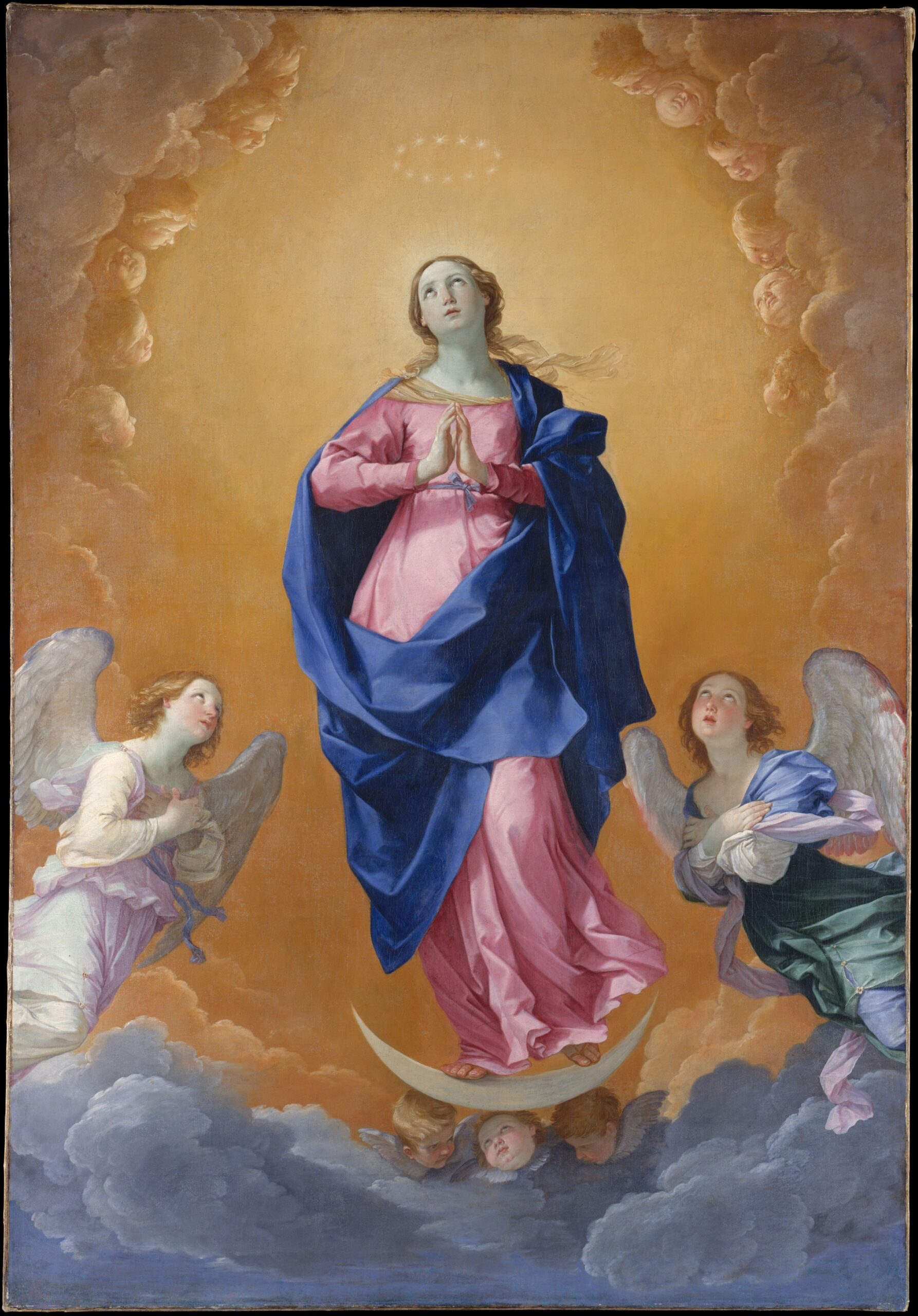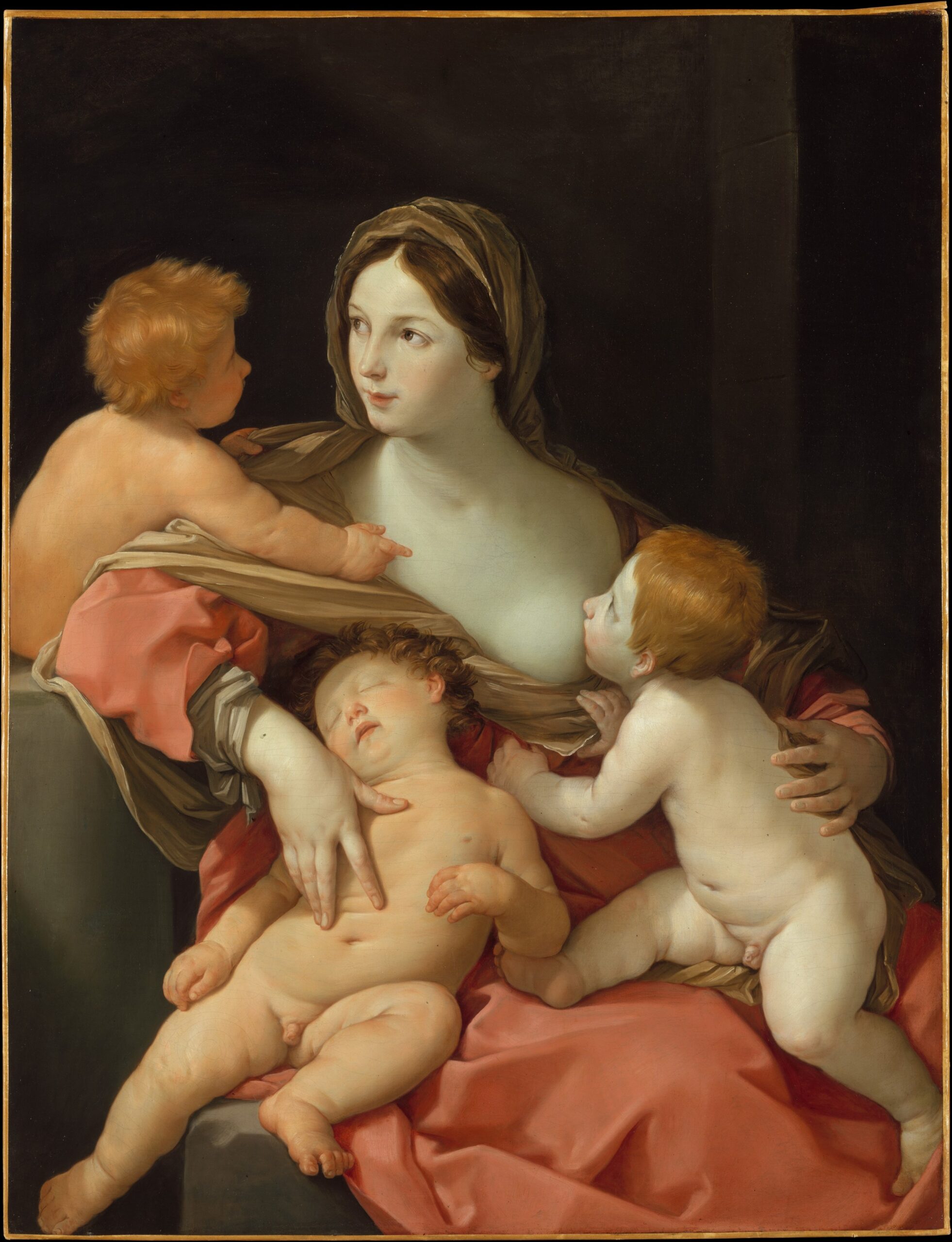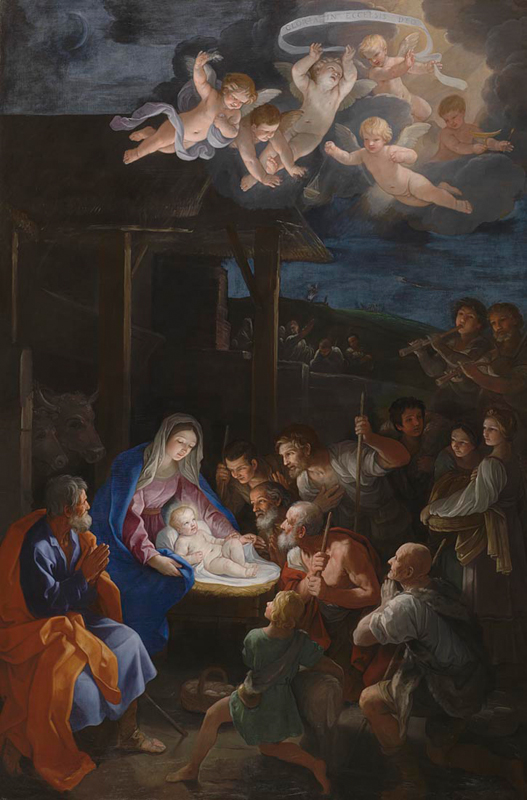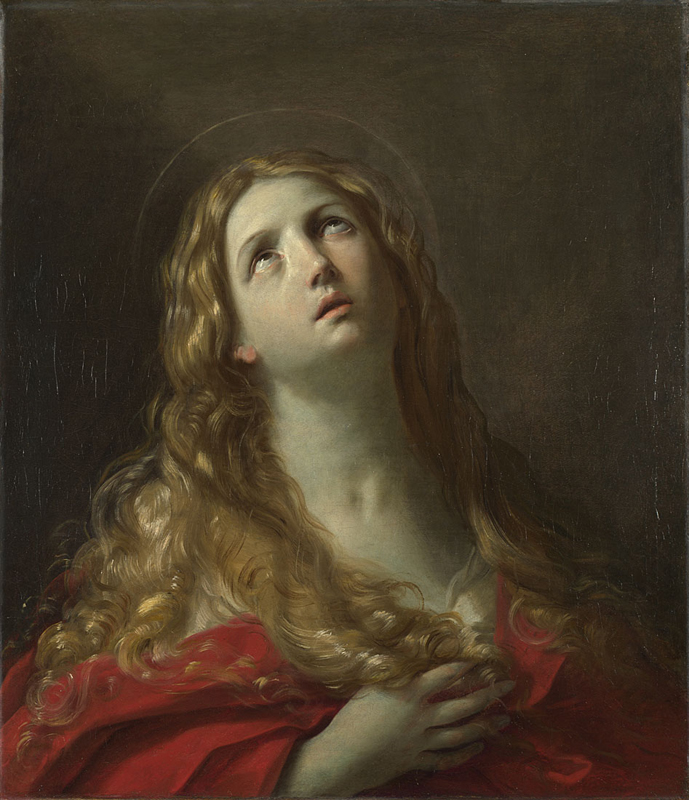By Amy Fredrickson and Anne Leader
Guido Reni was born in Bologna on 4 November 1575. One of the leading figures of Italian Baroque painting, Reni began his career in his native Bologna alongside Domenichino in the studio of Flemish painter Denis Calvaert from 1584 until 1593. By 1595 Reni was a member of the Carracci Academy, which is where he learned his draughtsman skills.
In 1601, Reni moved to Rome, where he briefly worked in Caravaggio’s style before immersing himself in Roman classicism. Raphael and the antique inspired his works, which is evident in his Aurora(1613-1614) ceiling fresco executed for Cardinal Scipione Borghese. An interest in classics is evident through his intertwinement of Greek and Roman motifs within the fresco. Reni’s incorporation of quadro riportato creates the illusion that the fresco is an easel painting framed in gold. Reni may have derived inspiration from Annibale Carracci’s technique in the Farnese Gallery, in which Annibale painted frames to appear as easel paintings.
Reni was quick to absorb and synthesize ideas into a graceful and lyrical manner. He worked on canvas and in fresco in Rome, Naples, Mantua, and Bologna for esteemed patrons including Pope Paul V and various members of Italy’s elite. By 1614, Reni returned to Bologna where his unrivaled workshop produced paintings for numerous international patrons, and painters Giovanni Lanfranco and Antonio Carracci worked alongside him as assistants. Known for his graceful, classical style, gentle emotion, and sweetness, Reni dominated the Bolognese art scene after the death of his mentor Ludovico Carracci in 1619. After Reni died in 1642, he was called ‘The Divine Guido.’ Reni maintained his reputation during the eighteenth and early nineteenth centuries as his harmonious paintings were often compared to those of Raphael. During the latter part of the nineteenth century John Rushkin, an art critic, criticized his style, declaring it too sentimental. A 1954 exhibition in Bologna dedicated to Reni helped restore his status as a prominent seventeenth-century painter.
Reference: Richard E. Spear. “Reni, Guido.” Grove Art Online. Oxford Art Online. Oxford University Press.
Further reading: The Divine Guido: Religion, Sex, Money, and Art in the World of Guido Reni by Richard E. Spear
Aurora, Fresco, 1614. Rome: Casino Rospiglioso, Palazzo Pallavicini.
Charity, ca. 1630, Oil on canvas, New York: The Metropolitan Museum of Art. Gift of Mr. and Mrs. Charles Wrightsman, 1974.
Immaculate Conception, 1627, Oil on canvas, New York: The Metropolitan Museum of Art. Victor Wilbour Memorial Fund, 1959.
The Adoration of the Shepherds. c.1640, Oil on Canvas, London: The National Gallery. Bought, 1957.
Saint Mary Magdalene, 1634-5, Oil on Canvas, London: The National Gallery. Bought, 1840.
The Coronation of the Virgin, c. 1607, Oil on canvas, London: The National Gallery. Bequeathed by William Wells, 1847.






